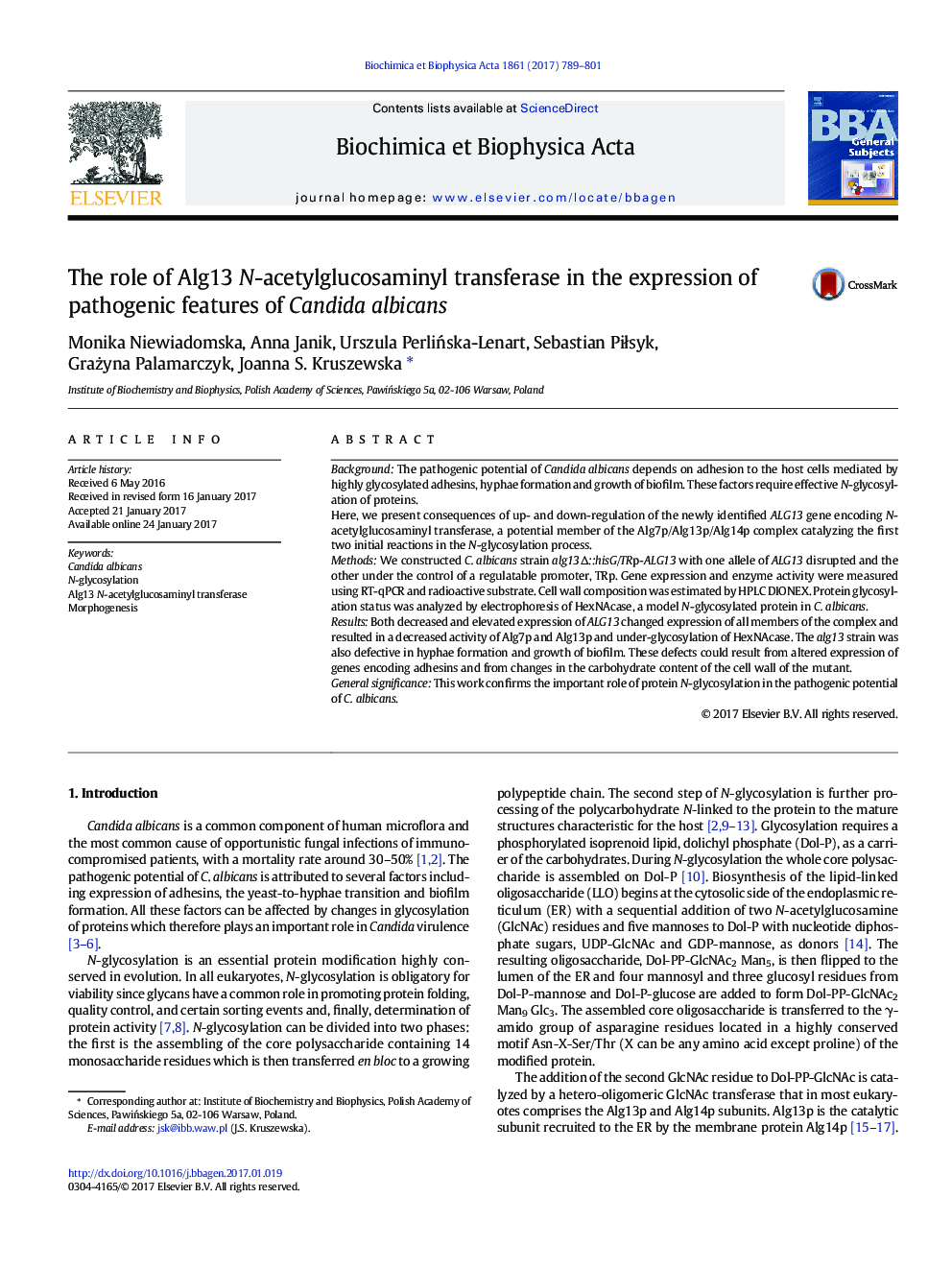| کد مقاله | کد نشریه | سال انتشار | مقاله انگلیسی | نسخه تمام متن |
|---|---|---|---|---|
| 5508134 | 1400362 | 2017 | 13 صفحه PDF | دانلود رایگان |

- ALG13 gene encoding N-acetylglucosaminyl transferase in C. albicans
- Expression of ALG13 gene influences expression of all members of Alg7/13/14 complex.
- Defective N-glycosylation alters pathogenic attributes of C. albicans.
- Expression of genes encoding highly glycosylated adhesins Als1 and Hwp1 is changed.
- Cell wall of alg13 mutant contains much less mannose.
BackgroundThe pathogenic potential of Candida albicans depends on adhesion to the host cells mediated by highly glycosylated adhesins, hyphae formation and growth of biofilm. These factors require effective N-glycosylation of proteins.Here, we present consequences of up- and down-regulation of the newly identified ALG13 gene encoding N-acetylglucosaminyl transferase, a potential member of the Alg7p/Alg13p/Alg14p complex catalyzing the first two initial reactions in the N-glycosylation process.MethodsWe constructed C. albicans strain alg13Â â::hisG/TRp-ALG13 with one allele of ALG13 disrupted and the other under the control of a regulatable promoter, TRp. Gene expression and enzyme activity were measured using RT-qPCR and radioactive substrate. Cell wall composition was estimated by HPLC DIONEX. Protein glycosylation status was analyzed by electrophoresis of HexNAcase, a model N-glycosylated protein in C. albicans.ResultsBoth decreased and elevated expression of ALG13 changed expression of all members of the complex and resulted in a decreased activity of Alg7p and Alg13p and under-glycosylation of HexNAcase. The alg13 strain was also defective in hyphae formation and growth of biofilm. These defects could result from altered expression of genes encoding adhesins and from changes in the carbohydrate content of the cell wall of the mutant.General significanceThis work confirms the important role of protein N-glycosylation in the pathogenic potential of C. albicans.
Journal: Biochimica et Biophysica Acta (BBA) - General Subjects - Volume 1861, Issue 4, April 2017, Pages 789-801